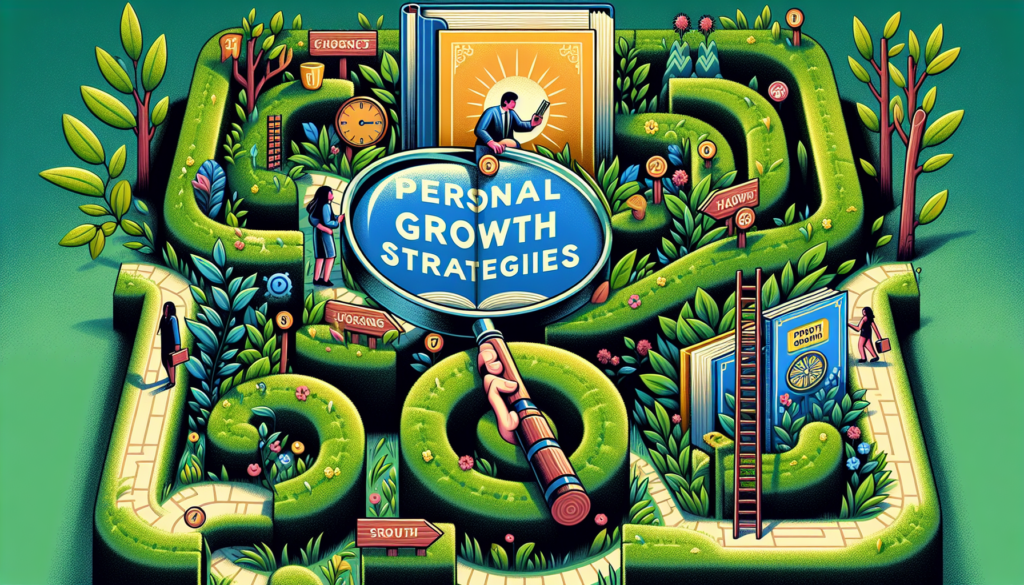Creative Problem-Solving Techniques: Unleashing Innovation
Welcome to the world of creative problem-solving techniques, where innovative solutions are born and challenges are conquered with out-of-the-box thinking. In a society that thrives on innovation and progress, the ability to solve problems creatively has become a valuable skill in both personal and professional realms. Whether you are an entrepreneur looking to navigate obstacles in your business or a student tackling complex assignments, mastering creative problem-solving techniques can set you apart from the crowd.
But what exactly are creative problem-solving techniques, and how can they be leveraged to overcome obstacles and achieve success? In this comprehensive guide, we will delve deep into the world of creative problem-solving, exploring different strategies, tools, and approaches that can help you think more creatively, approach challenges from new angles, and unlock your full problem-solving potential.
The Power of Creative Problem-Solving
Creative problem-solving is a process that involves generating innovative solutions to complex problems. It goes beyond traditional problem-solving methods by encouraging individuals to think outside the box, explore unconventional ideas, and approach challenges from different perspectives. By tapping into their creativity and imagination, individuals can come up with unique solutions that may not be apparent through conventional problem-solving approaches.
One of the key benefits of creative problem-solving is its ability to foster innovation and creativity. By challenging individuals to think creatively, problem-solving techniques can lead to breakthrough ideas, innovative products, and novel approaches to old problems. Creative problem-solving also promotes a growth mindset, encouraging individuals to embrace challenges, learn from failures, and persist in the face of obstacles.
Types of Creative Problem-Solving Techniques
There are various techniques and approaches that can be used to enhance creative problem-solving skills. Some of the most common techniques include brainstorming, mind mapping, lateral thinking, design thinking, and the SCAMPER method. Let’s explore each of these techniques in more detail:
1. Brainstorming
Brainstorming is a well-known technique for generating creative ideas and solutions to problems. In a brainstorming session, individuals come together to share their ideas, thoughts, and suggestions without judgment or criticism. By allowing for free-flowing creativity, brainstorming can lead to innovative solutions that may not have been considered otherwise.

2. Mind Mapping
Mind mapping is a visual technique that involves creating a diagram to represent ideas, concepts, and connections. By organizing thoughts in a visual format, individuals can see relationships between different elements, identify patterns, and generate new ideas. Mind mapping can be a powerful tool for stimulating creativity and exploring new possibilities.

3. Lateral Thinking
Lateral thinking is a problem-solving technique that involves approaching problems from unconventional angles and thinking outside the box. By challenging assumptions, breaking patterns, and exploring alternative perspectives, individuals can uncover unexpected solutions to complex problems. Lateral thinking encourages creative thinking and can lead to innovative breakthroughs.
4. Design Thinking
Design thinking is a human-centered approach to problem-solving that focuses on understanding the needs of users, generating creative solutions, and prototyping ideas. By empathizing with users, defining problems, ideating solutions, prototyping ideas, and testing concepts, individuals can create innovative solutions that address real-world challenges. Design thinking is widely used in product development, service design, and innovation processes.
5. SCAMPER Method
The SCAMPER method is a creative problem-solving technique that involves asking a series of questions to stimulate creative thinking. The acronym SCAMPER stands for Substitute, Combine, Adapt, Modify, Put to another use, Eliminate, and Reverse. By applying these questions to a problem or challenge, individuals can generate new ideas, explore different possibilities, and uncover innovative solutions.
Real-Life Applications of Creative Problem-Solving
Creative problem-solving techniques are not just theoretical concepts; they have real-life applications in various fields and industries. From business and technology to education and healthcare, creative problem-solving plays a crucial role in driving innovation, fostering creativity, and overcoming challenges. Let’s explore some examples of how creative problem-solving techniques are being used in different contexts:
1. Business
In the business world, creative problem-solving is essential for driving innovation, improving processes, and staying ahead of the competition. Companies that embrace creative problem-solving techniques are able to develop new products, streamline operations, and solve complex challenges more effectively. For example, companies like Google and Apple are known for their innovative cultures that encourage employees to think creatively, experiment with new ideas, and push the boundaries of what is possible.
2. Technology
In the fast-paced world of technology, creative problem-solving is a key driver of innovation and progress. From developing cutting-edge software to designing revolutionary gadgets, technology companies rely on creative problem-solving techniques to tackle complex technical challenges and deliver innovative solutions to users. For example, companies like Tesla and SpaceX are known for their visionary approach to problem-solving, using creative thinking to push the boundaries of technology and change the world.
3. Education
In the field of education, creative problem-solving is a valuable skill that helps students think critically, explore new ideas, and develop innovative solutions to academic challenges. By incorporating creative problem-solving techniques into the curriculum, educators can inspire students to think creatively, collaborate with peers, and approach problems from different angles. Creative problem-solving can also help students develop important skills such as teamwork, communication, and adaptability, which are essential for success in today’s rapidly changing world.
Expert Opinions on Creative Problem-Solving
Experts in the field of creative problem-solving offer valuable insights and perspectives on how to enhance problem-solving skills, foster creativity, and unlock innovation. According to Dr. Edward de Bono, a renowned proponent of creative thinking, “Creative thinking requires not only new ideas but also new ways of looking at old problems.” By challenging conventional thinking and embracing creativity, individuals can discover novel solutions to complex problems and drive meaningful change.
Dr. Teresa Amabile, a leading researcher in the field of creativity, emphasizes the importance of creating a supportive environment for creative problem-solving. According to Dr. Amabile, “Creative problem-solving flourishes in an environment that encourages experimentation, rewards risk-taking, and values diversity of thought.” By creating a culture that embraces creativity and innovation, organizations can foster a spirit of exploration, collaboration, and discovery.
Common Misconceptions about Creative Problem-Solving
Despite the benefits of creative problem-solving, there are some common misconceptions that can hinder individuals from fully embracing this approach. One common misconception is that creative problem-solving is only for artists, designers, or creative professionals. In reality, creative problem-solving is a valuable skill that can benefit individuals in all walks of life, from business executives to educators to students.
Another misconception is that creative problem-solving requires innate talent or artistic ability. While creativity is often associated with the arts, creative problem-solving is a skill that can be learned, practiced, and developed over time. By engaging in creative exercises, exploring new ideas, and challenging assumptions, individuals can enhance their problem-solving skills and unleash their creative potential.
Conclusion
To wrap things up, creative problem-solving techniques are powerful tools for unlocking innovation, fostering creativity, and overcoming challenges. By embracing creative thinking, exploring new ideas, and challenging assumptions, individuals can develop unique solutions to complex problems and drive meaningful change in their personal and professional lives. Whether you are a business leader looking to innovate in your industry or a student seeking to excel in your studies, mastering creative problem-solving techniques can set you apart and unleash your full potential. So, embrace creativity, think outside the box, and unleash the power of creative problem-solving in your life.


